How To Read A Rock: A Graphic Novel on Ocean Science written by Kevin Kurtz, illustrated by Nicole Kurtz; NSF, 2022.
This free graphic novel e-book published by theUnited States Science Support Program through a National Science Foundation grant is chock-full of science laced with zany fun. Readers journey to the ocean floor to discover fascinating facts while being entertained by jokes and sidebar silliness. It’s sort of like slipping shredded vegetables into a kid’s favorite food. Perfectly pitched for middle schoolers and up.
For whatever we lose (like a you or a me)/It’s always our self we find in the sea.~ e. e. cummings
Why this Book? Why will it matter to kids?
The study of rocks might seem dull or boring—until you get into it by way of material such as this. Then it’s intriguing, fascinating stuff! Readers who jump into this book focused on the science of investigating rocks found on the ocean floor will embark on an educational adventure that’s amusing and engaging, and certain to grab their attention.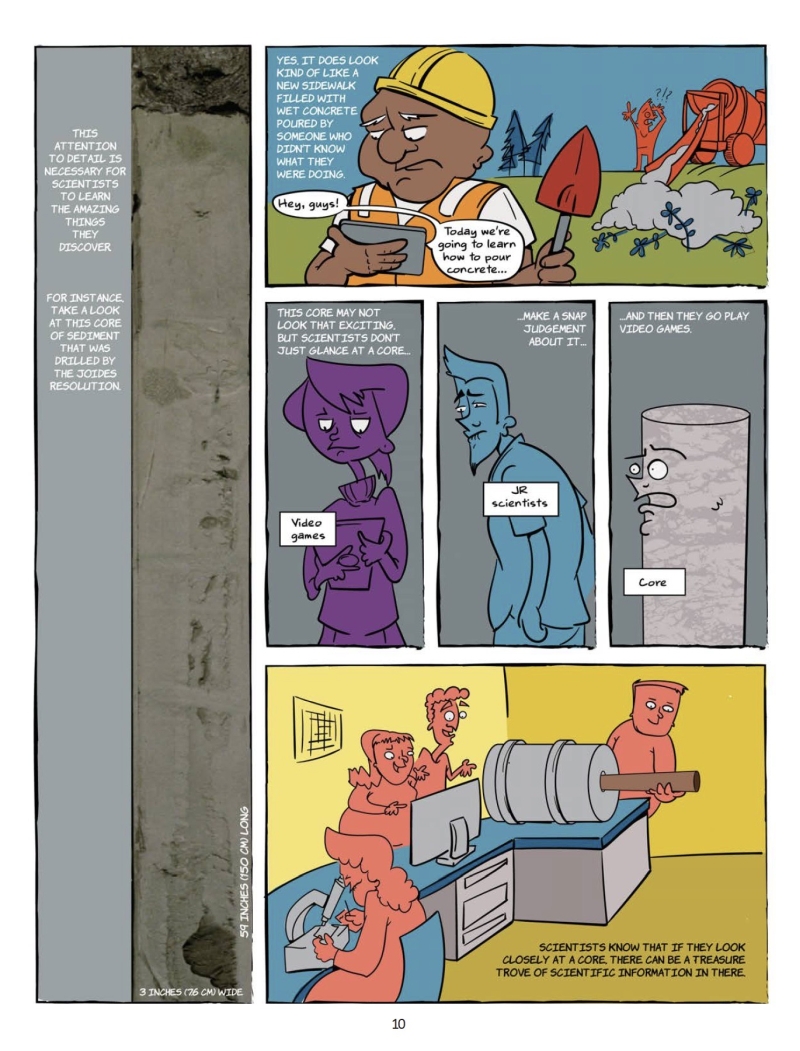
Illustration © Nicole Kurtz
Levels and Layers of Learning
Grade level: 5—up
Social-Emotional Learning Themes
Creativity, dedication, diligence, effort, inspiration, perseverance, persistence, perspective, resourcefulness, responsible decision-making, self-assurance, self-reliance, social awareness, tenacity, understanding
Content Area Connections: Geology, Arts

JOIDES Resolution. (Credit: Arito Sakaguchi & IODP/TAMU) [Photo ID: exp344_036]
Using This Book in the Classroom
Hit the Ground Running Ready Resources for Educators, Homeschoolers, and Parents
The How to Read a Rock e-book and curriculum guide are available on the JOIDES Resolution website.
Learn more about Kevin and his books, including how to arrange an in-person or virtual school visit.
Write Away! Ideas to prompt writing
List the metaphors and similes used throughout this book to help explain the concepts presented.
Choose one new fact presented in this book and explore it further. Write about it.
The author uses the introduction of the narrator’s cat Gertie as well as sidebar jokes to lighten the heavy concept load. Which jokes make you laugh out loud? Which is your favorite? Explain why.
The author refers to himself with comedic nicknames such as King-sized Kevin, Knee-Knocking Kevin, and Knowledgeable Knevin throughout the book. If you were writing a book, what would it be about? What nicknames would you use for yourself?
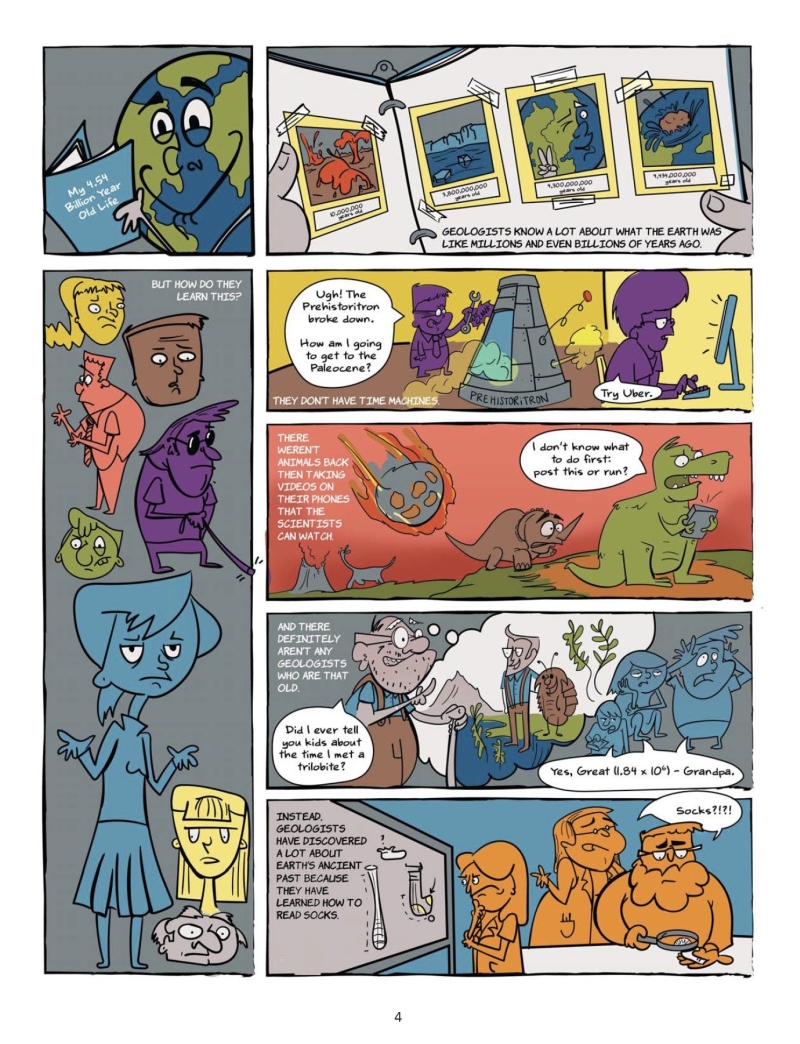
Illustration © Nicole Kurtz
Poetry Break Related poetry to recite before or following the reading of this book
Poetry breaks fit perfectly into brief moments in the school day—from opening or closing exercises to lining up for lunch; from zipping up backpacks and jackets to transitioning from one subject to the next. Reading a poem typically takes less than a minute; yet, it can introduce or reinforce a concept, provide clarity, celebrate language, exemplify rhythm, enhance vocabulary, expand understanding of a concept, increase attention span, initiate reflection, spark imagination, or simply summon a giggle. And, poetry soothes and strengthens the spirit.
The following poetry book celebrates science in a wacky, humorous way:
- Science Verse by Jon Scieszka, illustrated by Lane Smith
And Then There’s This…
Enrichment activities, related books, online resources, craft projects, and ideas for further study
Kevin’s free JOIDES Resolution picture e-books, as well as the second volume of How to Read a Rock (when it becomes available), can be accessed here.
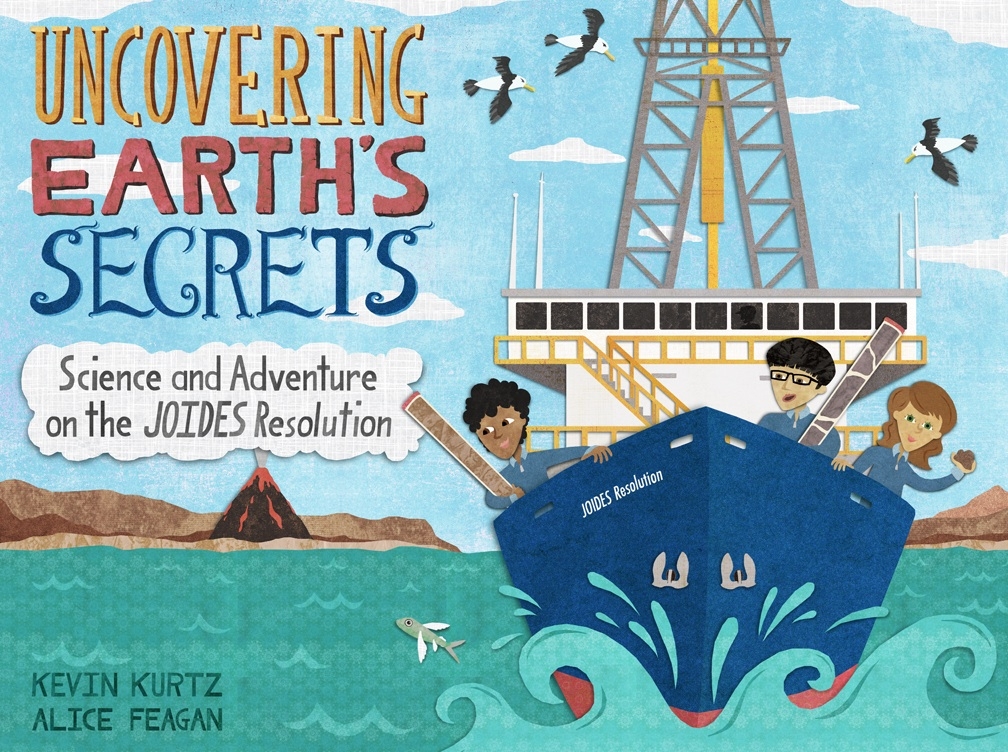
Meet the Author
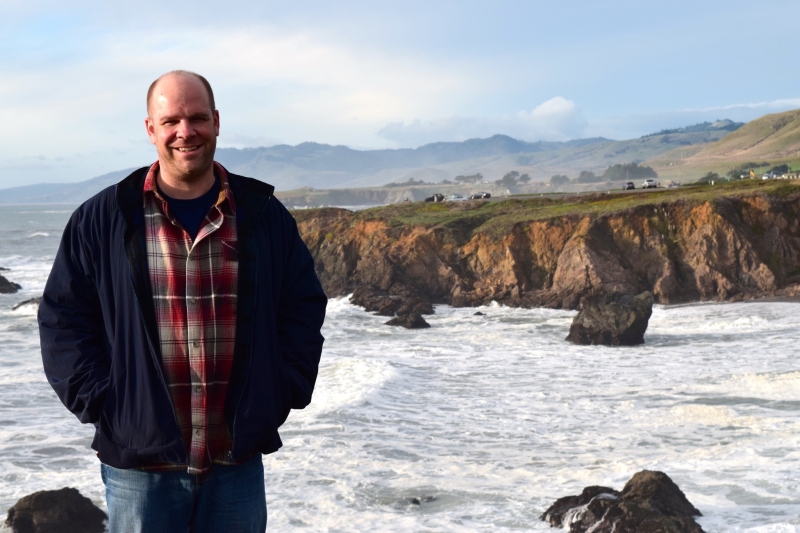
Kevin Kurtz
Kevin Kurtz is an award-winning author who has written over 25 nonfiction children’s books. He holds degrees in English literature and elementary education and started his career assisting with lab and field work at a marine biology research center. Kevin then used the knowledge and skills he gained from these experiences by working as an educator, program developer, and curriculum writer for organizations such as the Science Factory Children’s Museum in Oregon and the South Carolina Aquarium. Kevin’s first children’s book, A Day in the Salt Marsh, was published in 2007.
Kevin now lives in Rochester, New York. He continues to write books and visit schools around the country to introduce children to the wonders of reading, writing, science, and nature.
Backstory: Q & A with Kevin Kurtz
I have had the pleasure of participating in the Rochester Children’s Book Festival and the Western New York Children’s Book Expo alongside Kevin Kurtz. I know him as a humble, dedicated writer for children with a terrific sense of humor. It is my pleasure to feature Kevin and his latest book on Children’s Book Corner.
Judy Bradbury: Tell us about this project: its background, its purpose, and how you came to create the e-book, How To Read a Rock: A Graphic Novel on Ocean Science.
Kevin Kurtz: How to Read a Rock was written to teach middle school kids about—and hopefully get them interested in—why some scientists will go out in the middle of the ocean into the seafloor to collect rocks and sediment. That may sound like mission impossible, but we knew there were a lot of interesting things involved, and we also thought we could present it in a fun, even slightly irreverent, way that could appeal to that age group.
Not to tell you my entire life story, but this book would not have happened if in 2009 I had not been picked to participate in an educator workshop onboard the scientific drilling research ship the JOIDES Resolution. I was fascinated by everything I learned about the ship and the scientists who worked on it. I immediately started thinking about how introducing kids to the wonders of this scientific research ship could get them excited about science. This led to me writing some nonfiction picture e-books about the ship and its research that are available free on the JOIDES Resolution website.
Because of my involvement, I met another educator who had been on the JOIDES Resolution (who, coincidentally, has the same last name as mine). Nicole Kurtz is a very creative artist, and we collaborated on some other education/outreach projects. Last year, the JOIDES Resolution education/outreach division put out a call for proposals to create new outreach/education projects about the ship. Nicole and I decided we would like to create a comic book/graphic novel to teach middle school kids about the ship and its research, so we submitted a proposal and were lucky enough that we were funded.
JB: Tell about one hurdle you experienced in the creation of How To Read a Rock: A Graphic Novel on Ocean Science or provide a memorable (or humorous!) anecdote related to the writing of the e-book.
KK: One hurdle was that I wrote this for 12-year olds when I was 50 years old, and so sometimes I wrote goofy jokes in the script that were references to things I remember well from my childhood, but nobody else has thought about in at least 35 years. For example, I initially wrote a joke that referenced the old Charles Atlas ad that used to appear in comics. The ad showed a bodybuilder kicking sand on a skinny guy on the beach. I realized when I was revising the script that I had a few of these anachronistic references that would make no sense to the average middle schooler, so I replaced them, despite my self-indulgent desire not to, with more modern references. Luckily, I have two teenage boys in the house who could help me pick references that were more relevant to 2020’s readers.
JB: What would surprise readers to learn about you or about the writing of How To Read a Rock?
KK: Well, this is more about looking at all my published books, which are (almost) all nonfiction books about science and nature. I think most people would be surprised to learn that for the first 25 years of my life, I wanted to be a cartoonist who creates a newspaper comic strip like Peanuts and Calvin and Hobbes .I did not think at all about writing nonfiction science books until I was in my late 20’s.
Eventually I gave up on wanting to be a professional cartoonist when I came to terms with the fact that I didn’t have the artistic talent to draw something that someone else would pay money to look at. So I’ve been really excited to be able to write a funny comic book, as it is the realization of a childhood dream to create comics.
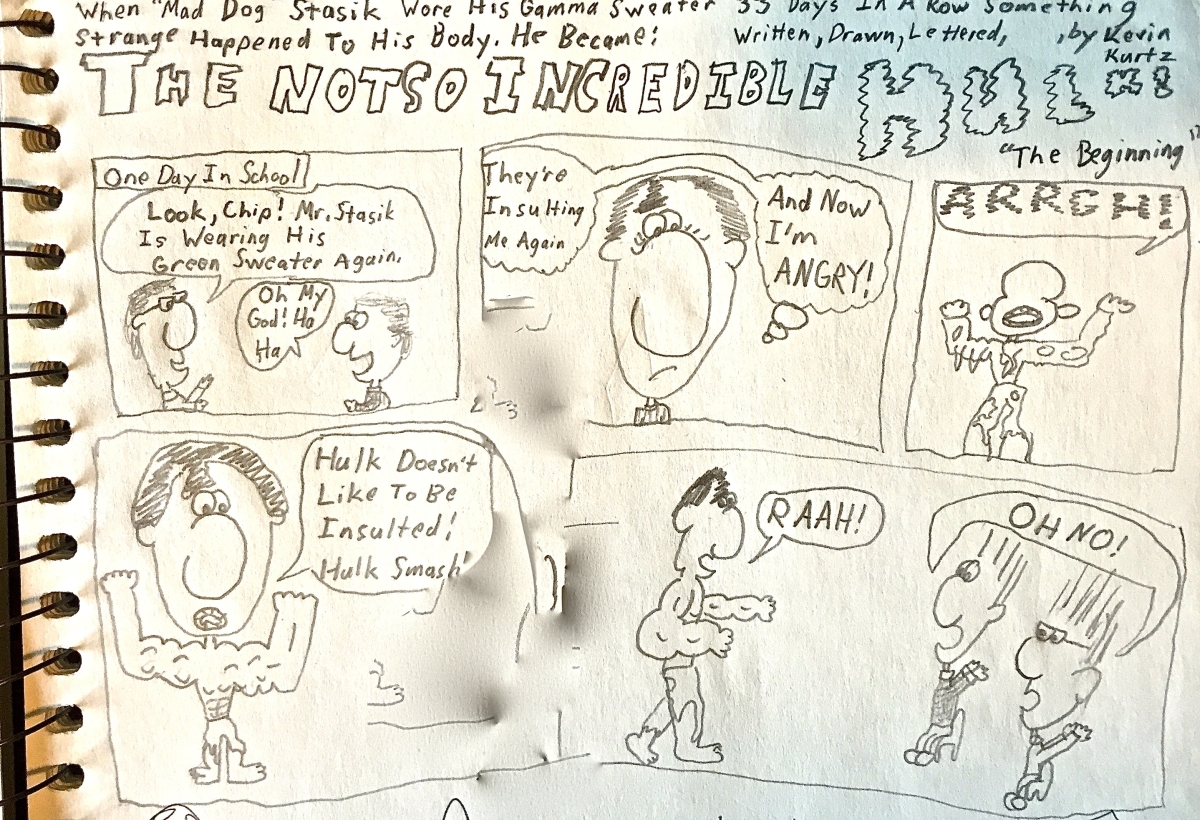
Comic created by Kevin in ninth grade about his Latin teacher
JB: What do you hope readers will take away from How To Read a Rock?
KK: During the past few years it seems more people feel that everyone’s opinion is equally valid about everything and therefore we don’t need to listen to the findings of scientists when making decisions about pandemic diseases or global climate change. Because of this, I’ve felt more urgency to help the public understand how scientists come to their conclusions and why their expertise is valid. I‘m hoping that readers of To Read a Rock take away an understanding that scientific knowledge is based on careful observations and hard work and is not just someone’s hot take after reading a tweet they disagree with .
JB: Graphic novels are hugely popular among middle grade and young adult readers. This graphic novel e-book is not only appealing and informative, it’s funny! Tell about the process of writing the text. Did you collaborate directly with the illustrator, Nicole Kurtz (who we understand is not related to you even though she has the same last name!)
KK: Nicole and I worked fairly closely together. We initially discussed the basic concepts and the tone we wanted for the book. When I worked on the script, I wrote the text for each panel and what I was thinking for the drawing that would help the text make sense, or (hopefully) generate a laugh. Nicole would review my scripts and provide feedback on anything she didn’t think would work visually. We would then come up with other ideas. She then worked from my script to create the layout of the panels and design the characters. I would review her pencil sketches for the layouts and provide suggestions. She then would create the final artwork.
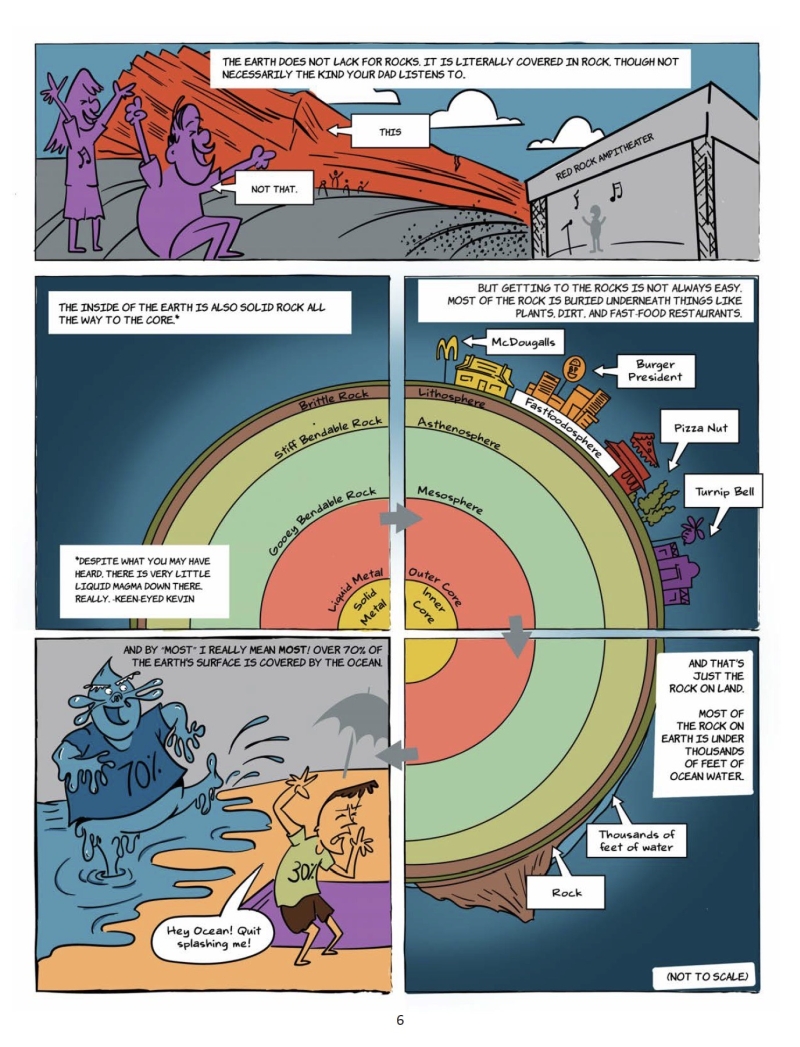
Illustration © Nicole Kurtz
JB: Tell us about the International Ocean Discovery Program.
KK: The International Ocean Discovery Program (IODP) is a scientific research program that is a collaboration among over 20 countries, including the United States. They mainly focus on marine geology, which is important since over 70% of the Earth is covered by ocean. We need to know what is happening under the oceans to better understand our planet. The IODP uses drilling ships that can send a drill thousands of feet into the ocean to retrieve sediment and rock from under the seafloor. These samples are called cores. They conduct multiple expeditions each year all over the world. Each expedition endeavors to answer a scientific question. After an expedition, the cores they drill are preserved in repositories so other scientists can study them to help them with their own research.
JB: How do you see How To Read a Rock connecting to curriculum or being used in schools?
KK: I’ve had multiple middle school and high school science teachers tell me they use my picture books to introduce various units to their students. I think it helps lay foundation to the concepts they teach by sharing stories from the real world related to those concepts. It also presents the information in a fun way that hopefully gets the students interested in learning more. I see How to Read a Rock being used for that purpose. We have also created a curriculum guide for How to Read a Rock that identifies 5th through 9th grade science standards addressed by the book, as well as sharing activity ideas and other free resources that can further the learning.
JB: What is one question you wish I had asked, and what is your answer?
KK: What were your influences for this book?
Answer: In thinking about how to reach middle schoolers, I realized that a seeming constant for that age group is that it is the time when kids seek out comedy that is irreverent and/or satirical. That is why Mad magazine, “Weird” Al Yankovic, and Saturday Night Live have been popular with that age group for decades. I loved all three of those at that age too, so they were definitely influences. The 80’s comic strip Bloom County and the old Rocky and Bullwinkle cartoon were also influences. In both of those, humor was created because the narrator was often at odds with what was happening in the visuals. Also, the characters were aware they were in a comic strip/cartoon. I definitely aped both of those tropes to make this comic more fun, while still taking the science seriously.
JB: What project are you currently working on?
KK: I’m working on the script for the sequel to this book, How to Read a Rock, Vol. 2. It focuses on how ocean drilling has helped us learn more about earthquakes, volcanoes and tsunami. It will be available free on the JOIDES Resolution website at the beginning of 2023.
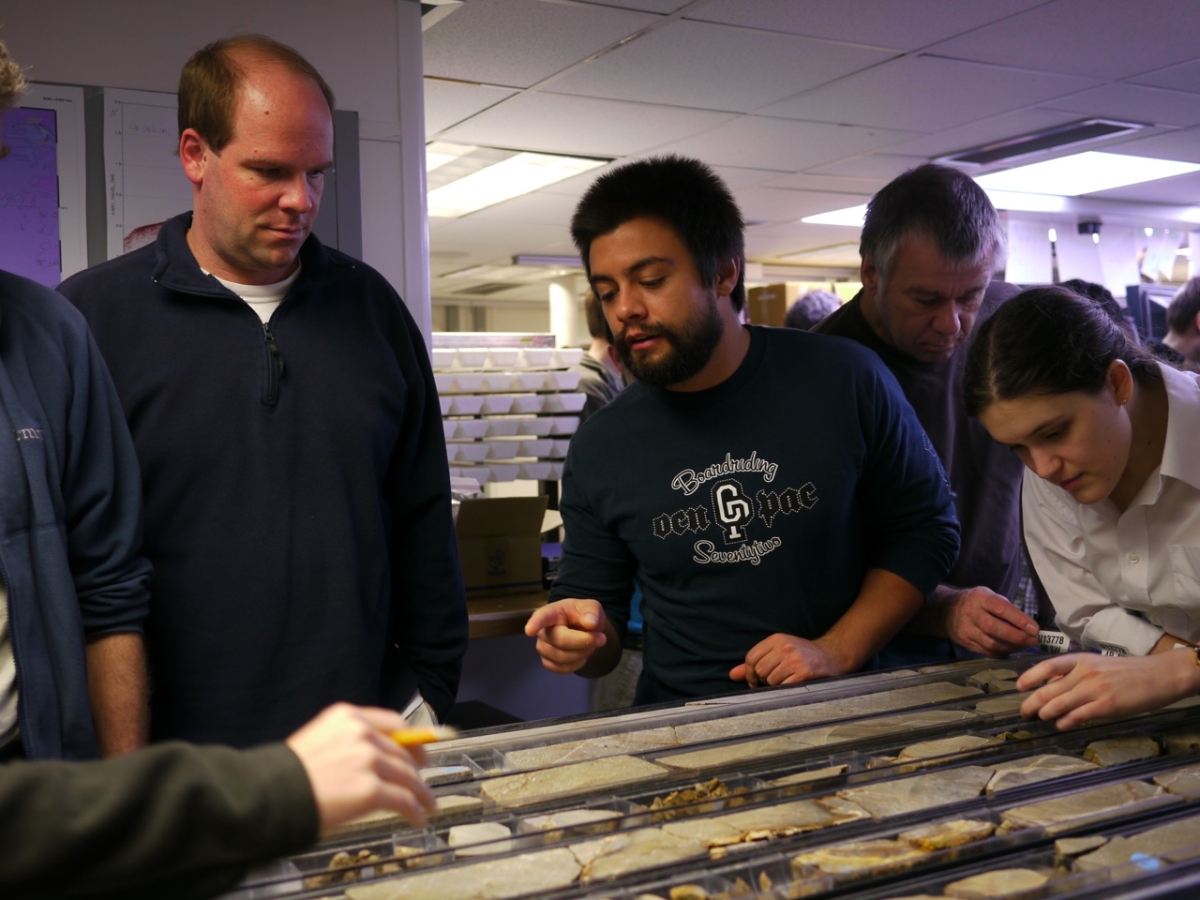
Kevin aboard JOIDES Resolution
About the Illustrator
Learn more about Nicole Kurtz. Connect with her on Instagram.
Sidebar Spotlight New releases of note
Each month I receive several boxes of books to review from various publishers. As I read and peruse the books, I place them in two piles: those that I will consider featuring on the blog, and those that don’t fit the mission or theme of Children’s Book Corner blog for whatever reason. I highlight some of the books in the “possible” pile on Mondays (most weeks) on Instagram. Ultimately, I choose the one new release I will feature on my monthly blog post. Yet there are many terrific books I wish I could give a shout-out to, even if I can’t write an entire post about each one. So, Sidebar Spotlight is a means of giving a nod to new releases that, in my opinion, are noteworthy. I’ve linked each title to Bookshop so you can learn more. Happy reading, friends! And feel free to comment below.
- A Book, Too, Can Be a Star: The Story of Madeleine L’Engle and the Making of A Wrinkle in Time by Charlotte Jones Voiklis and Jennifer Adams and illustrated by Adelina Lirius The story and the afterword emphasize the importance of following your dreams and the true meaning of success.
- Don’t Look Back: A Memoir of War, Survival, and My Journey from Sudan to America by Achut Deng and Keely Hutton; a searing memoir depicting the travesty of war, set in South Sudan, as told by a refugee who survived unspeakable trauma but ultimately triumphed; for older readers, grades 7 and up.
- Playing Through the Turnaround by Mylisa Larsen; middle grade novel about a group of resourceful kids who participate in Jazz Lab and join forces to mobilize their school to halt cuts in the school budget.
- Ready for Spaghetti: Funny Poems for Funny Kids by Michael Rosen, illustrated by Polly Dunbar; a delightfully fun set of poems that are light in tone, entertaining, and giggly, accompanied by equally charming illustrations.
- Walter Had a Best Friend by Deborah Underwood, illustrated by Sergio Ruzzler; a simply, but elegantly told tale that explores the common experience of having a best friend and then losing them, and ultimately finding a new one. A quiet wonder.
What Do You See When You Look at a Tree? by Emma Carlisle; a beautifully rendered paean to trees and the wonder, solace, and value they bring to our world.
-
You Can! Kids Empowering Kids by Alexandra Strick, illustrated by Steve Antony; sweet, exuberant illustrations and simple text work together to make the concept of inclusion accessible to the littlest of listeners.
News & Updates
I am honored to have been selected to be the guest columnist for the November/December issue of Knowledge Quest, the magazine of the American Association of School Librarians (AASL). You can read “Chapter Books Can Make a World of Difference” here.
If you read and like a book, consider posting a review on GoodReads or on Amazon (if you bought it there). Authors and illustrators appreciate the shout-out. It increases visibility of their books. Also consider asking your local library to purchase a copy!
It’s School Visit season, and I have been enjoying spending time with children who are curious about my characters and excited about reading and writing. Contact me for school visit information.
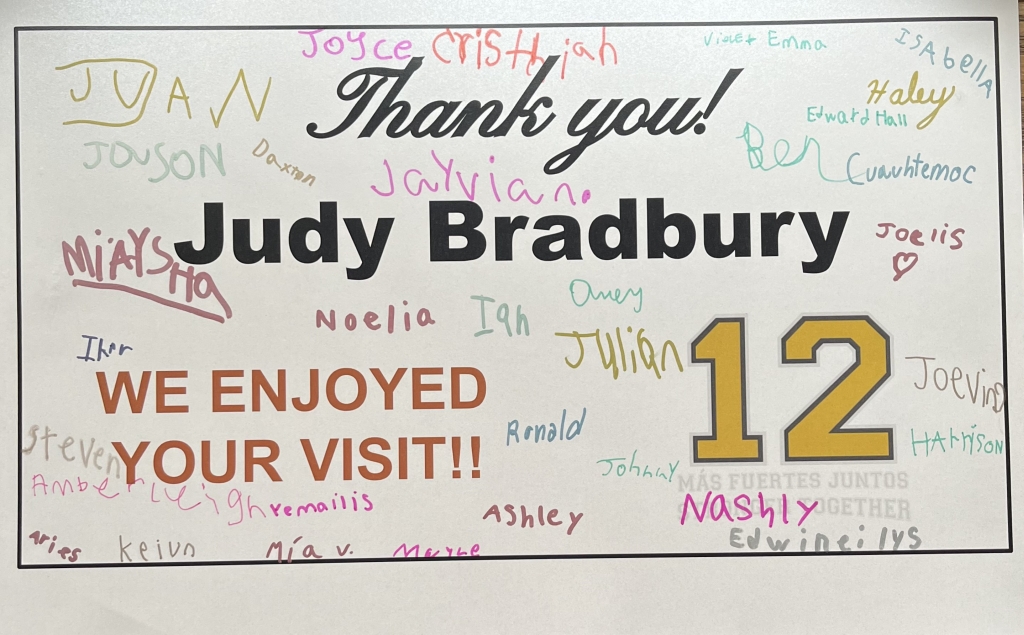
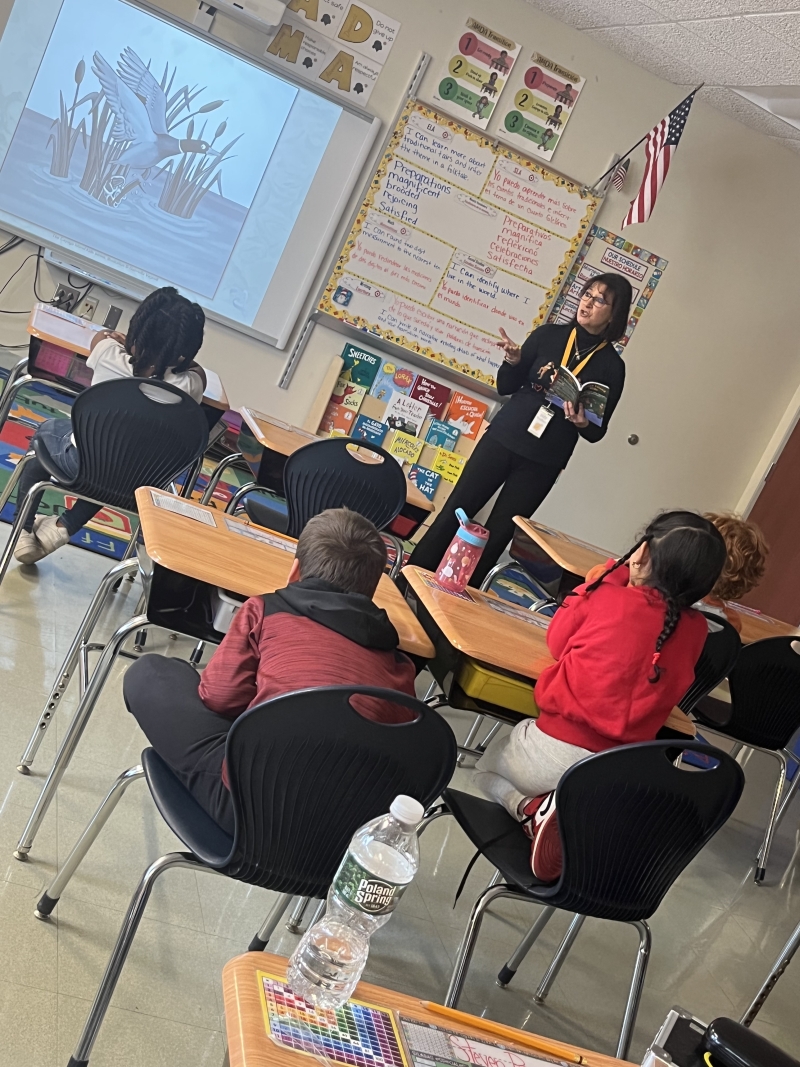
Read-aloud of a portion of the Cayuga Island Kids Book 2
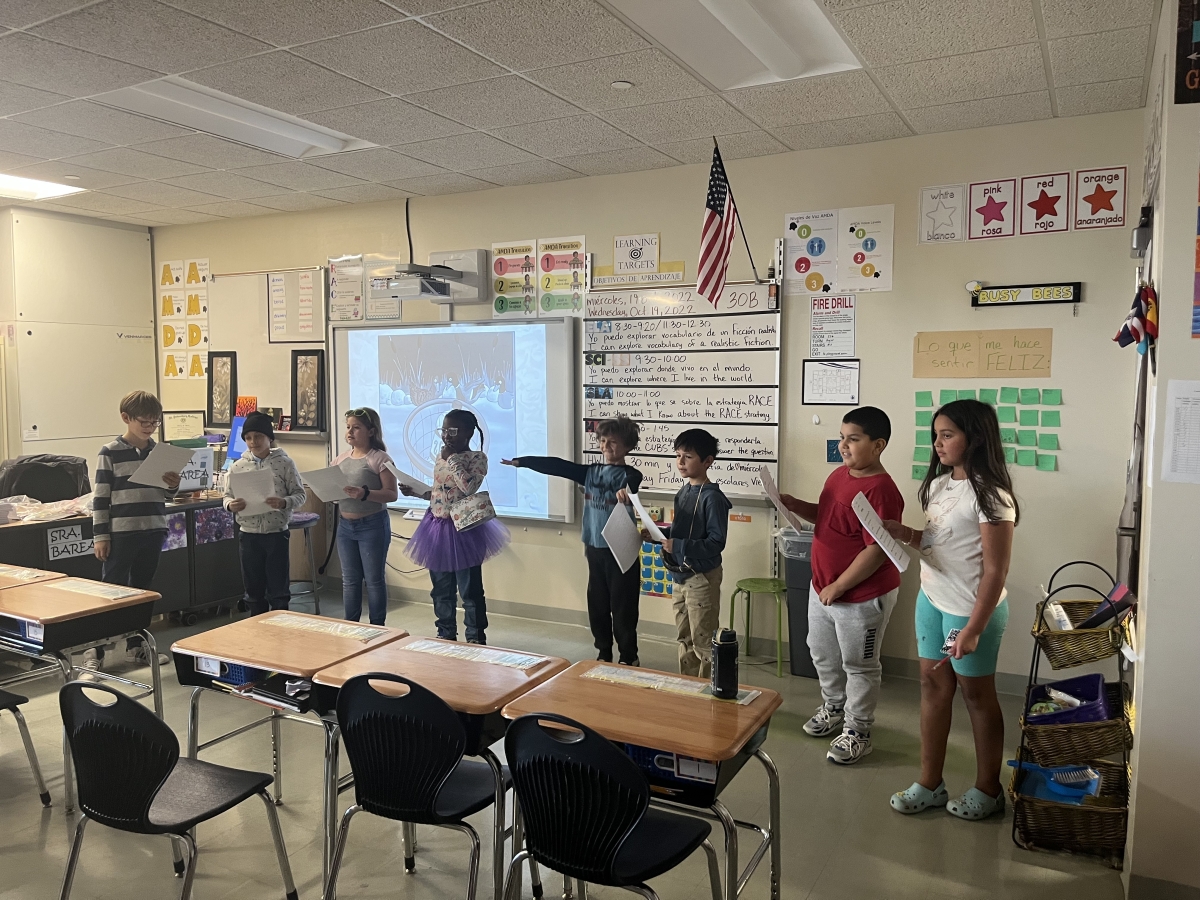
Readers Theater of an excerpt of Cayuga Island Kids, complete with props!
Find where I’ll be appearing with my books on my Events page.
The Mock 2023 Ezra Jack Keat Foundation Award is underway. Find information on this and more news for educators on their expansive website.
Final Thought
You are not a drop in the ocean. You are the entire ocean in a drop. ~ Rumi

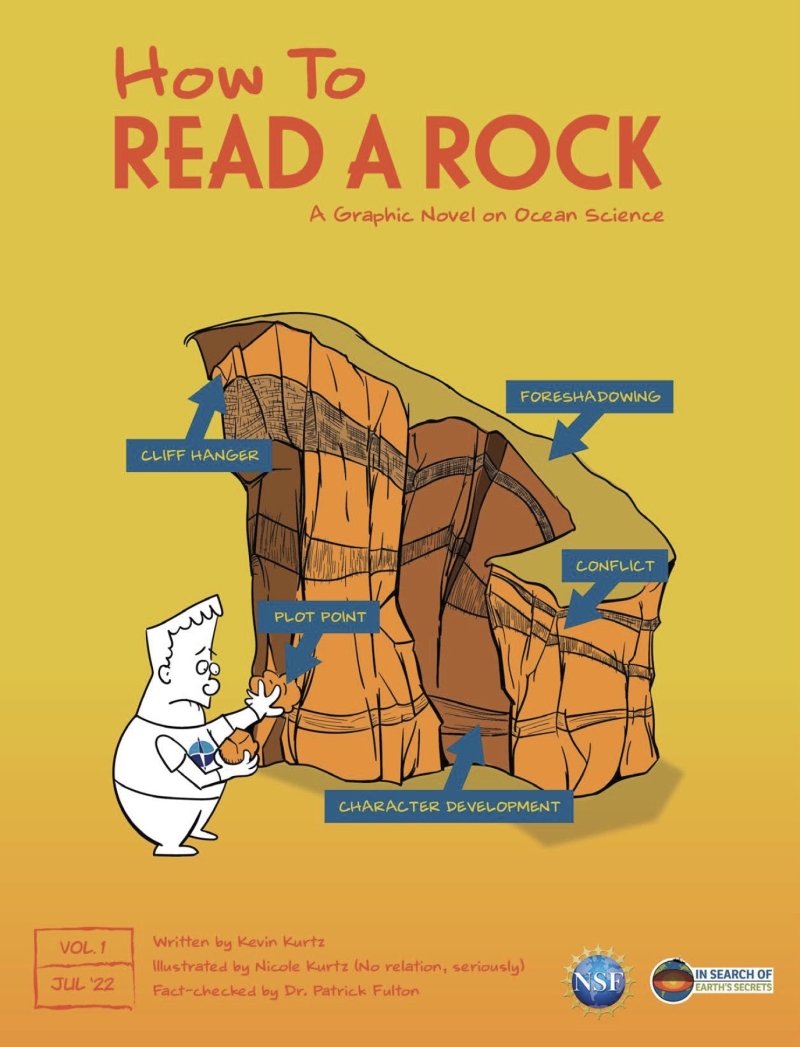
Kevin’s books are fascinating. His quirky sense of humor makes difficult concepts understandable. How cool that the JOIDES Resolution people are giving free access to these books! Also, I love the article you wrote about chapter books and how important they are.
I agree, Vivian! Kevin’s books absolutely do make difficult concepts accessible. His sense of humor is delightful and spot on for middle schoolers. It was a pleasure to feature Kevin and his books on Children’s Book Corner. And thank you for your kind words about my KNOWLEDGE QUEST piece. It was truly a wonderful experience being chosen as guest columnist and having the opportunity to talk about chapter books and civic engagement.